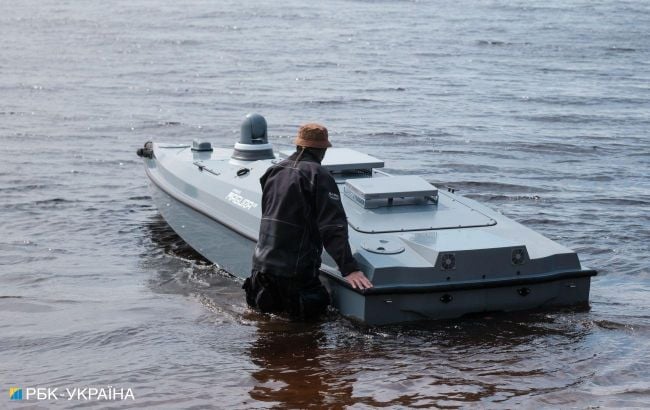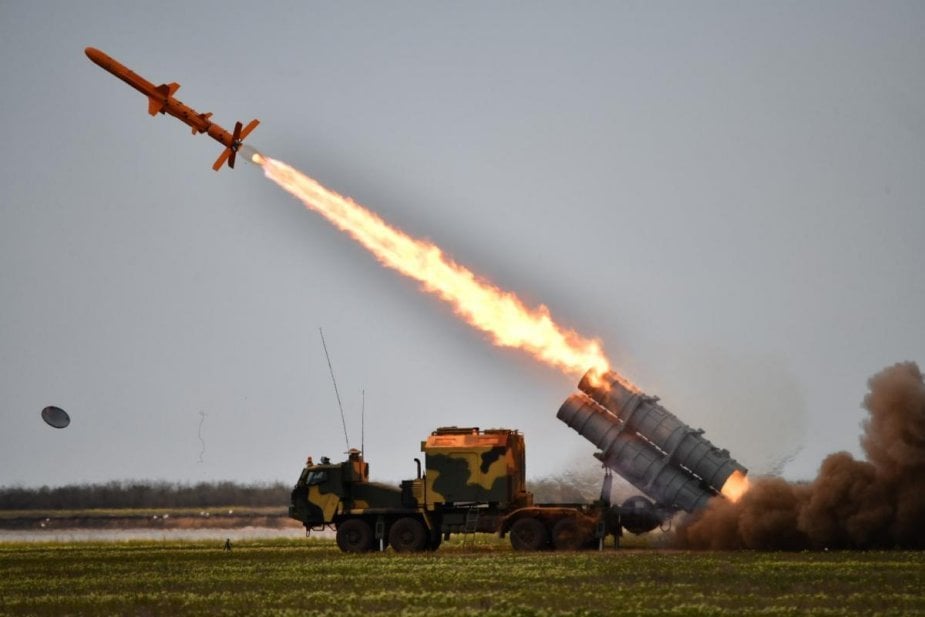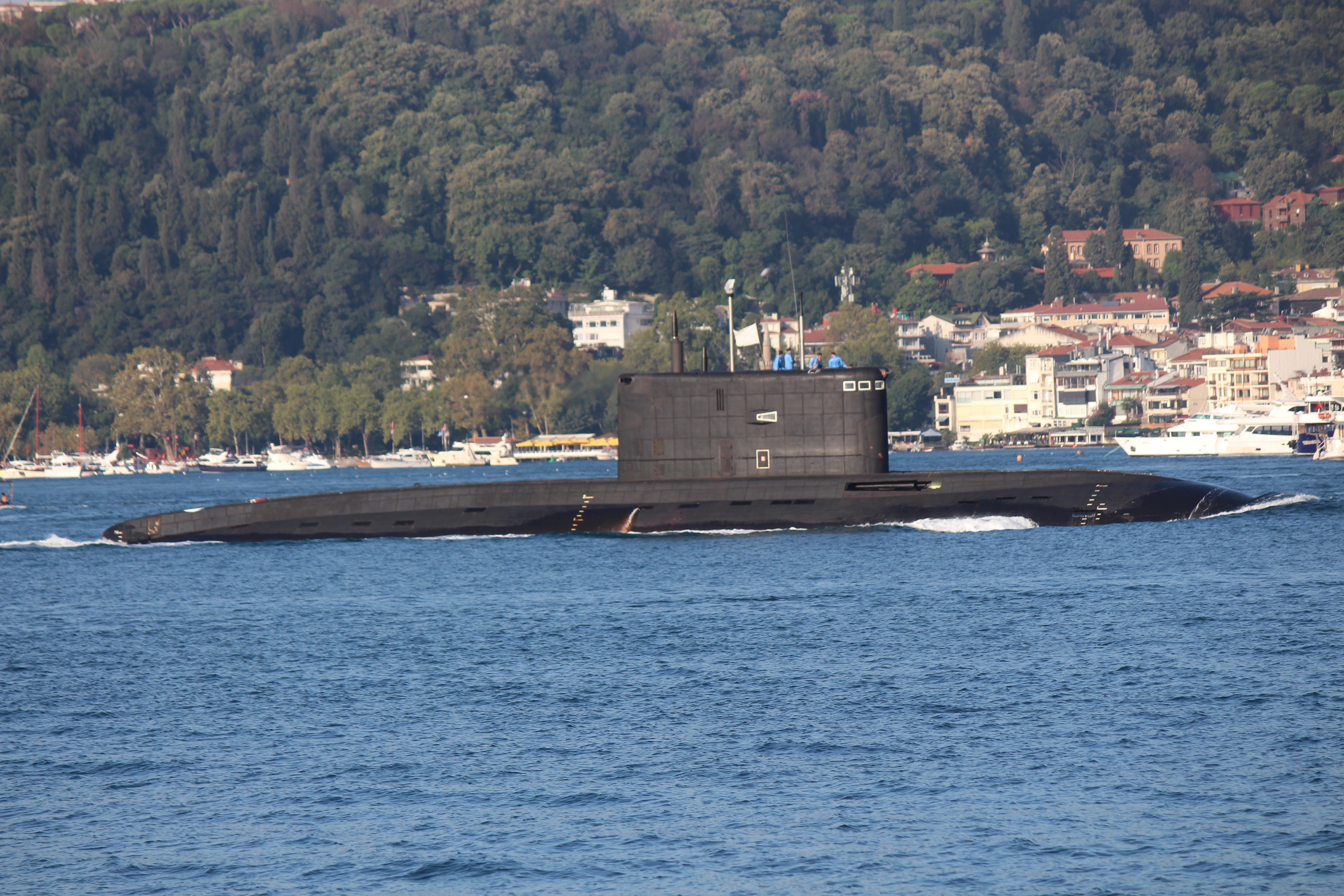
ARLINGTON, Va.– A frenzy of Ukrainian-designed and –built high-speed, bomb-laden Magura V5 unmanned surface drones added an explosive exclamation point to the widespread frustrations in and with Russia’s Black Sea Fleet when they sank Caesar Kunikov, a landing ship most likely carrying needed ammunition to the southern fight earlier this year.
As many as 10 Magura V5s participated in the night-time 20-minute sea-fight off the southern tip of the Russian-occupied Crimean peninsula. During the March attack, two drones carrying at least 400 pounds of explosives each were maneuvered to hit and sink the landing ship transport, which usually carries a crew of 60. The Russians are reported to have destroyed four of the attackers.
The 18-foot-long Maguras are routinely described as a couple of jet skies loaded with explosives. But unmanned aerial and maritime systems’ successes in destroying high-value targets at low-cost to their operators are changing the character of naval warfare.
Leo Daugherty, historian with the Army’s Cadet Command Fort Knox, Ky., told USNI News that the February sinking and others that followed meant Moscow has lost about one-third of its fleet in the Black Sea since the war began in February 2022. Before the invasion, it numbered 40 surface warships (from combatants such as cruisers to corvettes to mine warfare vessels and auxiliaries) and seven submarines.
At least 15 Russian warships have been sunk or severely damaged in the war, news reports and Ukrainian intelligence say. The attacks have come from cruise missiles, which the Russian Navy should have expected, and from advanced highly maneuverable sea drones. Several of the Russian fleet’s surface ships and two submarines are operating in the eastern Mediterranean and have escaped attack.
Turkey has invoked provisions of the Montreux Convention allowing it to close the Black Sea to incoming warships, which includes Russian ships that are not part of the Black Sea Fleet.
The Ukrainians have found success with maritime drones because they are operating “in a relatively confined body of water [against] relatively static targets,” Bryan Clark, senior fellow at the Hudson Institute, told USNI News. He added Kyiv’s intelligence organizations and navy “have basically adapted to that environment” where Russian ships can’t really get underway quickly or maneuver.
The Ukrainians’ success with the maritime drone swarm attacks and aerial drone and missile strikes have shown the Russians how vulnerable Sevastopol, headquarters of the Black Sea Fleet, is to a determined adversary, security analysts interviewed by USNI News agreed.
Right now, Ukraine, which is struggling in the ground and land battles against the Russians, holds an advantage in maritime drone warfare. Samuel Bendett, a CNA advisor on strategy, policy, plans and programs, said in an area like autonomy, the Ukrainians “will probably get there before the Russians and possibly other militaries around the world.”

He added the Ukrainian start-up culture and tech sector have shown “they can manufacture something quickly.” But the increasingly successful attacks on its industrial base by Russian air-launched cruise and hypersonic missiles illustrate Kyiv’s problem of production to the scale needed to be decisive.
Almost from the start of the war, glaring weaknesses in basic naval readiness in the Black Sea Fleet became evident when the Ukrainians sank Moskva, (RTS-71), a guided-missile cruiser, with two subsonic Neptune Ukrainian-built antiship missiles.
USNI News reported then the Black Sea Fleet’s flagship was “blind and unprepared” for the attacks, by subsonic Ukrainian-built “birds of prey,” as missiles and aerial drones are commonly called in this war.
The irony in this successful strike is that the land-based Neptunes were turned back to the Ukrainians, who manufactured them when the Soviet Union collapsed in the early 1990s. Over the years and even now, Kyiv has modified them, extending their range from 100 to 200 miles and increasing their payload.
Constant and rapid modification of unmanned systems and missiles to keep the other side off-balance and evade new defenses has been a critical lesson for militaries other than those of Ukraine and Russia, the Royal United Services Institute reported.
“This technology can spread, can actually proliferate” while both Ukraine and Russia are learning what works and doesn’t, before changing yet again – often in a matter of weeks, Bendett said.
While there is little open source information about what the next likely advances either will make, Igor Delanoe, deputy head of French-Russian Analytical Center Observo, told USNI News, “we can imagine that [the Ukrainians] work on improving the already existing systems: bigger payload, enhanced range of action, enhanced furtivity.”
The repeated Ukrainian attacks on the fleet’s ships at sea, the sitting targets in Sevastapol’s dry docks and port infrastructure – some stymied by GPS jamming, grenades or harbor-blocking barges; some successful – finally caused the Black Sea Fleet’s command to find more distant ports to frustrate more attacks.
Russia moved three Kilo-class submarines, two guided-missile frigates, five large landing vessels and other ships to Novorossiysk, one of Russia’s major exporting ports for oil and grain.

“Although it has adapted to new challenges posed by Ukrainian operations against Russian civil and military naval infrastructures in the Black Sea, the [fleet] has not been able to overcome all the difficulties emanating from an asymmetric warfare at sea caused by the Ukrainians’ employment of naval drones and cruise missiles,” Delanoe wrote in February’s Foreign Policy Research Institute paper on the Black Sea Fleet in the “Special Military Operation.”
Since that publication, the United Kingdom and France have sent Ukraine Sea Sparrow and SCALP cruise missiles, designed to hit fixed targets like ports, shipyards and ships pierside. French President Emanuel Macron and NATO Secretary General Jens Stoltenberg have called for lifting some restrictions on Ukraine’s using missiles sent by partners to strike military-related targets in Russia.
“If we tell (the Ukrainians) you do not have the right to reach the point from which the missiles are fired, we are in fact telling them that we are delivering weapons to you but you cannot defend yourself,” Macron said, according to The Associated Press.
NATO members have not put restrictions on using these weapons in Crimea, which they consider illegally seized by Russia in 2014. The recent use of the U.S. manufactured ATACMS [Army Tactical Missile System] to hit Sevastopol is an example of that exception.
The Black Fleet command also pulled almost all its ships capable of firing cruise missiles into Ukraine, as they did during the Syrian civil war, out of immediate danger.
“Sevastopol is no longer a safe berth and Kalibr-armed ships can no longer launch cruise missiles with impunity,” the Wavell Room, a British-based defense and security commentary website, reported.
The asymmetric attacks’ success has also caused the major shift in the fleet’s war role to active defense, not offense. Any Kremlin plans for amphibious assaults on Ukrainian ports, like Odesa, on the Black or Azov seas were put back on the shelves when the fleet’s landing ships became targets.
The drones and missile strikes on the Black Sea Fleet broke Russia’s blockade of Ukrainian ports, which were driving grain prices higher globally. If exports were cut off much longer, large parts of Africa faced starvation.
The strikes “changed the course of the war by restoring [the Ukrainian] economy,” opening the port of Odesa and allowing shipments to ports in Romania for export, Clark said
To ensure safe shipping of grain and other products, Turkey, Bulgaria and Romania agreed in January on a joint minesweeping operation to clear the Black Sea of drifting mines to ports, communications networks and maritime infrastructure.
“Ukraine has the potential maintain the new status quo at sea this summer,” Delanoe said.
The Russian military “should have expected” drone strikes, as well as missile attacks on its ground and sea forces from the start, Rhonda Smith-Daugherty, chair of the history department at Alice Lloyd College in Kentucky, told USNI News. She pointed to Kyiv’s use of Turkish-built armed aerial drones in its fight against separatists in the Donbas region of Ukraine in 2021, months before Russia’s all-out invasion a few months later. Unmanned aerial systems had been used for surveillance and reconnaissance for almost a decade by both sides, Smith-Daugherty added.
“It goes back to Russia’s overconfidence” before the invasion, she said. Her husband, Leo, added, “it makes me wonder what’s being taught in Russian military academies.”

“This war exhibits the importance of command and control,” Daugherty said.
For the ground war, the Russians have fallen back on Soviet tactics, techniques and procedures of mass – large numbers of troops in often bloody frontal assaults and door-to-door street fighting, knowing they outnumber the Ukrainians despite taking high numbers of dead and wounded. They also can outgun the Ukrainians with a rejuvenated industrial base concentrated on the Ukrainian war effort and rushing to the eastern and southern fronts imported artillery and shells, missiles and drones from North Korea and Iran.
Putin and the Russian high command “used the same tactics in the second Chechen war” to finally prevail in late 1999 and early 2000 to bring the breakaway republic back under Kremlin control.
For the Ukrainians, the loss of Starlink satellite connection directing its first known sea drone strike in October 2022 underscored that point on command and control. Russian advances in electronic warfare to jam satellite communications continue, now affecting precision munitions from systems such as HIMARS [High Mobility Artillery Rocket System] in the ground war.
But gaps remain as the successful March attack near the Kerch Strait on Sergey Kotov, a patrol ship, demonstrated. The surface drones are barely visible on shipboard or patrol aircraft radar. Fleet watch-standers are operating at another disadvantage: the attacks come at night and in swarms. The drones have proved vulnerable to helicopter attacks, but the Ukrainians are now arming some with antiaircraft missiles.
President Volodymir Zelensky “is saying one of the main tasks of 2024 is production of 1 million drones” for land, air and sea missions, Smith-Daugherty said. Last year, Kyiv is believed to have manufactured about 300,000 drones.
In addition to being morale boosters in Kyiv when a Russian warship is sunk by a drone, the maritime systems continue to provide key intelligence, surveillance and reconnaissance; vital communication links in several domains and a future role in air defense and land attack as modifications are fielded, analysts said.
Sea drones have also expanded the naval war into attacks on maritime infrastructure beyond ports and shipyards. An example would be the successful sea drone attack on the 12-mile-long Kerch Bridge connecting Russia to Crimea. The bridge allowed Moscow’s industrial base to ship supplies by land without having to pass through hotly contested combat zones in southern Ukraine. The strike by earlier versions of Ukraine’s Sea Baby drone destroyed two sections of roadway that took months to repair.
Shortly after the bridge attack, other Sea Babies hit the large landing ship Olenegorsky Gornyak (near the port of Novorossiysk) and the tanker SIG, which was likely resupplying Russian ground troops along the southern front.
The Ukrainians have not ruled out a new attack on the bridge from the air or the sea or by saboteurs. In the battle of technology over this piece of critical infrastructure, Russia has strengthened its antiaircraft defense there and has reportedly deployed a “blockade barge” to confuse targeters and unmanned systems’ operators.
The Ukrainians’ aim remains this year “to inflict damage to the Russian [Black Sea Fleet] units and infrastructures, plus destroying the Kerch bridge, which supposed [the development] of a very serious firepower,” Delanoe said.
While the Black Sea was never a “Russian Lake,” the presence of Kremlin naval power from the time of Peter the Great in the early 18th century meant access to the Mediterranean, Daugherty said. He pointed to the fleet’s importance today in that area in support of Russia’s operations and basing in Syria and projecting power westward.
“It will take more than drones” to defeat the Russian Navy in the Black Sea, Daugherty said, quoting Vice Adm. Oleksiy Neizhpapa, Ukraine’s top naval officer.
But “drones have leveled the playing field and helped keep Ukraine in the fight,” Delanoe added. Russia also faces challenges in rebuilding the Black Sea Fleet since Turkey invoked the 100-year-old convention on access through the Bosphorus Strait. Building replacement patrol vessels and the like at Russian shipyards or transferring corvettes through the river system would make them vulnerable to missile attack.
As Forbes reported, “Ukraine is taking out the fleet’s warships faster than Russia can build or reinforce them with ships from other regional fleets. The Black Sea Fleet is getting seven of the cruise-missile-armed Karakurts. Tsyklon [sunk in May] was the first to commission into front-line service. Another Karakurt, the incomplete Askold, was damaged in a November Ukrainian missile raid on a shipyard in Kerch in Crimea.”
After two years of war in the Black Sea, Russia maintains “a very capable navy,” U.S. Chief of Naval Operations Adm. Lisa Franchetti said.
The U.S. needs to think about how to address the threat of unmanned systems, as well as how to use them to counter threats, Clark said. “Taiwan, Saudi Arabia and other countries concerned about a maritime threat” could learn much from the naval war in the Black Sea.
Although Russian land forces have been gaining ground at a very high cost this year, “I don’t think the war’s outcome is a foregone conclusion,” Smith-Daugherty said. She mentioned Ukrainians “creeping into Russian territory” for targeted raids and cross-border drone and missile strikes.





